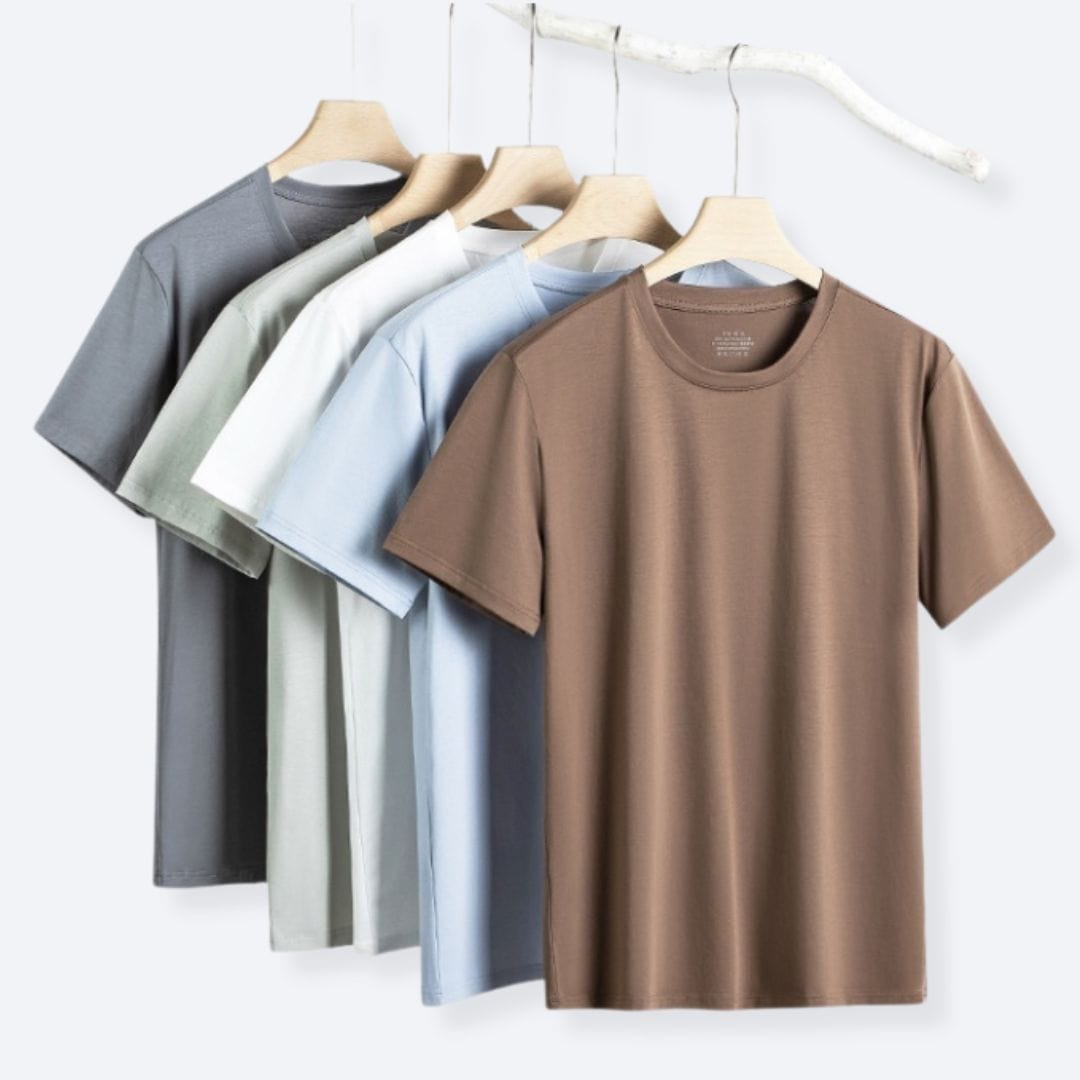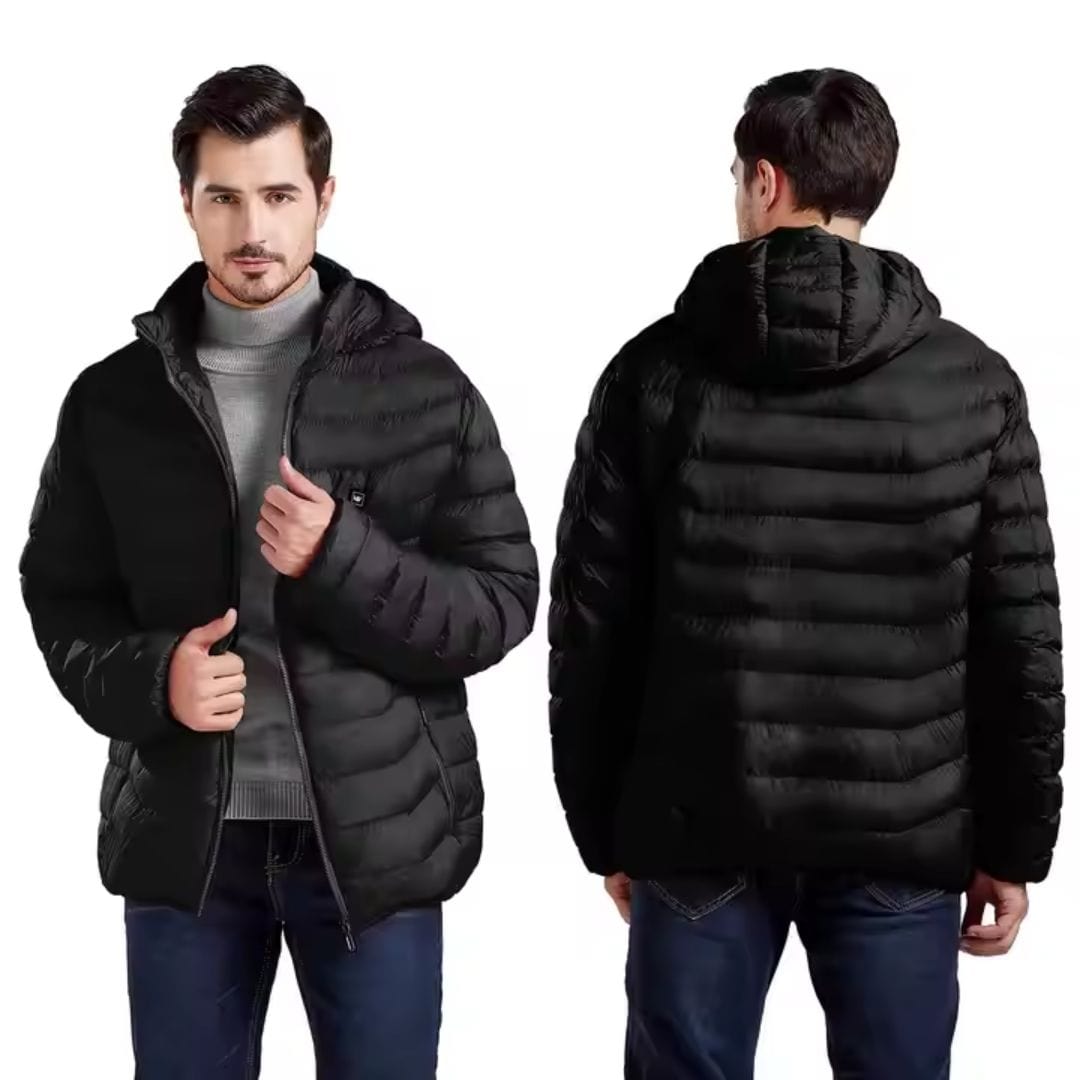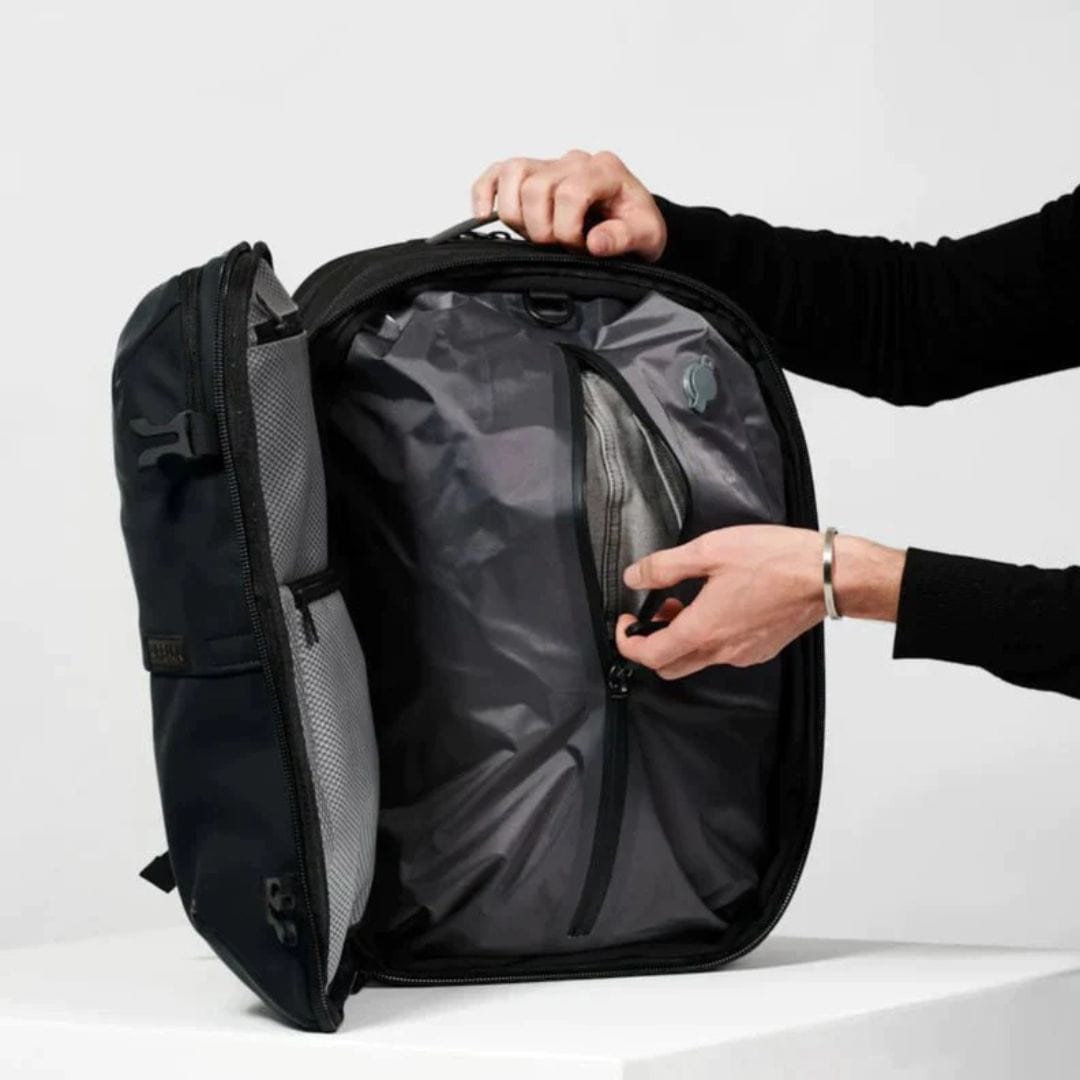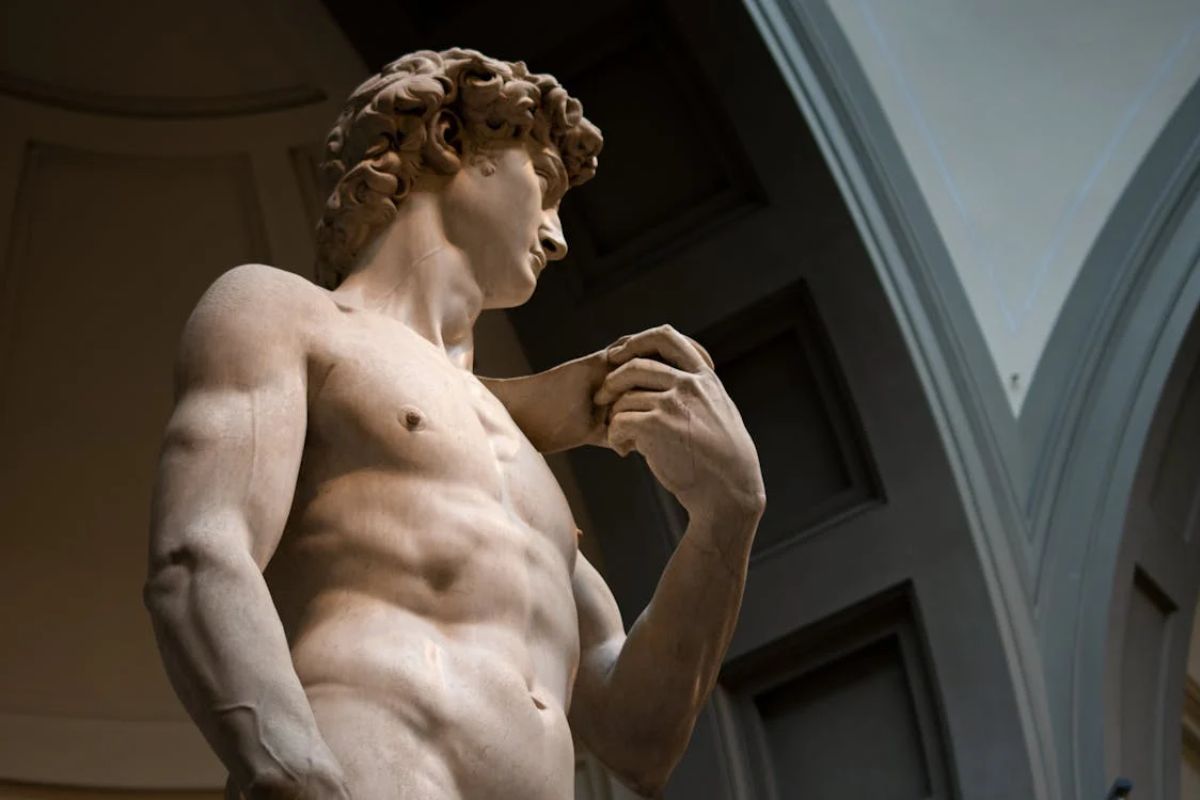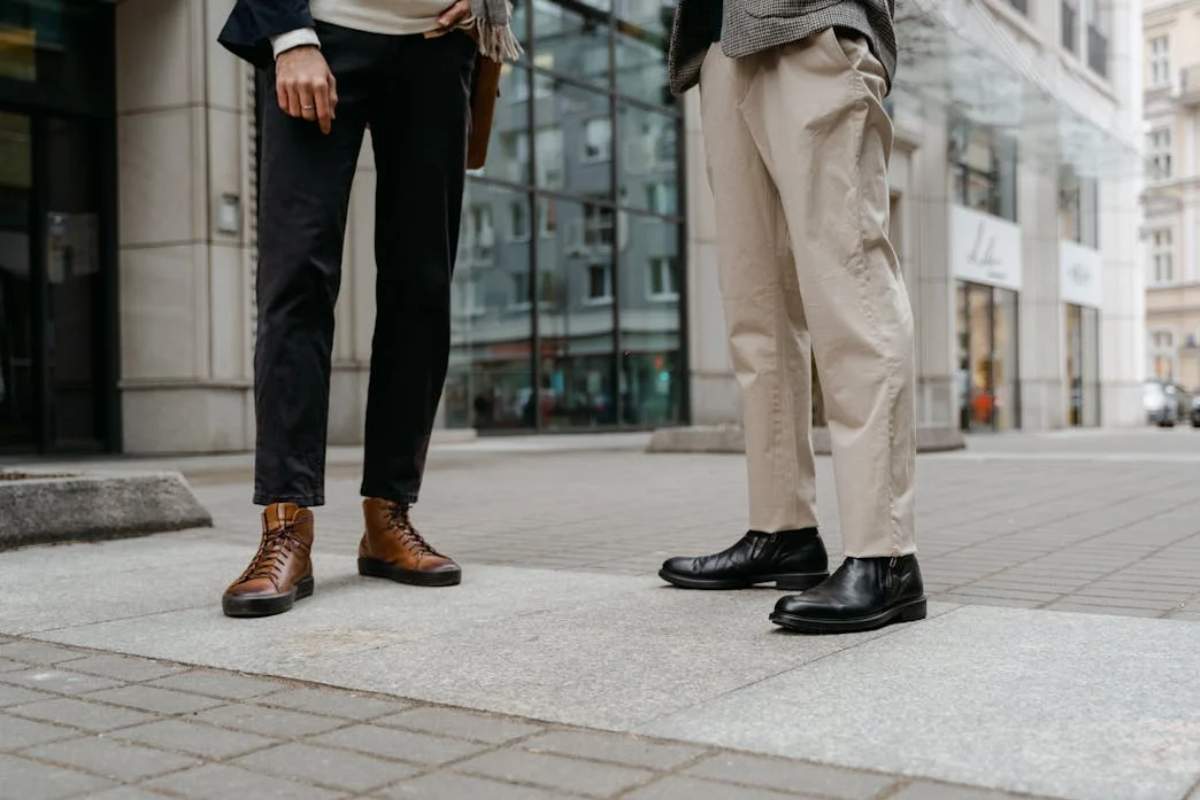The key to Italian menswear lies in simplicity and fit. Forget oversized shirts or worn-out sneakers; instead, think slim-fit trousers, crisp shirts, and polished shoes. Spring mornings might call for a lightweight blazer, while summer days demand breathable fabrics like linen shirts and tailored shorts. Your wardrobe should strike a balance between style and comfort.
The Best Travel Backpack for Italy Trips
Choose a travel backpack that combines style, practicality, and comfort. A 20-30 liter daypack is an ideal size for carrying essentials like a water bottle, guidebook, and camera without being too bulky. Look for a streamlined design that matches Italy's sophisticated aesthetic, avoiding overly sporty or bright-colored options.
Focus on quality when selecting materials. A water-resistant backpack protects your belongings from sudden rain showers, common in many Italian regions. Features like padded straps and back panels enhance comfort during long city walks or countryside hikes.
Prioritize organizational compartments to keep your essentials easily accessible. Multiple sections for items such as documents, chargers, and personal items can save time and hassle. Opt for a bag with secure zippers to add a layer of safety while moving through busy Italian streets or public transport.
By choosing a well-designed backpack, you blend functionality with style, complementing your overall travel attire.
How To Dress In Italy To Meet Italian Fashion
Italian men exude confidence through tailored, well-coordinated outfits that reflect their culture's emphasis on refined style. To align your appearance with Italian fashion, prioritize fit over trends and select high-quality fabrics for a polished look.
Embrace Tailored Clothing
Opt for clothes that fit your body well. Slim-fit trousers, fitted chinos, and structured blazers define Italian men's wardrobes. Avoid oversized or baggy clothing, as it detracts from the sharp silhouette associated with Italian style. For warmer seasons, lightweight linen trousers or tailored shorts complement the climate without compromising on elegance.
Choose Neutral Tones
Stick to classic colors like navy, white, black, and beige. Neutral tones create a sophisticated base and make mix-and-match combinations seamless. For instance, pair beige chinos shorts with a crisp white button-down shirt for a versatile daytime outfit suitable for various settings.
Invest in Quality T-Shirts
Wear, collared T-Shirts for both casual and formal occasions. Cotton or linen fabrics work well depending on the season. In spring or summer, lightweight, breathable fabrics keep you comfortable while ensuring you mirror the Italian focus on elegance.
Incorporate Smart Footwear
Select shoes that are both comfortable and stylish. Leather loafers, brogues, and Oxfords fit formal or semi-formal occasions, while clean sneakers or espadrilles offer casual options. Avoid worn-out or overly sporty footwear, as Italians emphasize well-maintained shoes as part of a refined appearance.

Accent With Accessories
Use accessories to enhance your look without overwhelming it. Add a lightweight scarf, sunglasses, or a sleek leather belt to complete your outfit. These small details can elevate a simple ensemble, emphasizing your consideration for Italian fashion.
What To Wear In Summer in Italy
Lightweight Shirts
Include 3-4 lightweight shirts in breathable fabrics like merino wool, cotton, or blends with polyester. These materials wick moisture and regulate temperature, keeping you comfortable in the Mediterranean heat. Opt for short-sleeved button-downs, polos, or classic striped shirts in light colors for a versatile look. Example: A white cotton button-up pairs well with tailored shorts for a casual yet put-together outfit.
Long-Sleeve Shirts
Pack 1-2 long-sleeve shirts for dinners or special evenings. Cotton or merino wool blended with synthetics are breathable, odor-resistant, and wrinkle-free—ideal for maintaining a polished appearance. A navy merino wool shirt complements lightweight trousers perfectly for sophisticated occasions.
Chino Shorts and Trousers
Choose 2 pairs of chino shorts in neutral shades like beige or navy for daytime wear. Pair them with casual polos or lightweight t-shirts. For evenings or cooler temperatures, include 1-2 pairs of lightweight trousers in white, navy, or beige. Travel pants combining style and functionality can save luggage space and work well for city walks or vineyard tours.
Footwear for Style and Comfort
Bring comfortable yet stylish sneakers for exploring cities and countryside. For evenings, leather loafers or sandals elevate your look while maintaining comfort. Pack flip-flops for beach outings to round out footwear options.
Lightweight Outerwear
A light sweater or blazer adds the perfect layer for cooler evenings. Linen blazers are versatile and elegant, while cotton bomber or denim jackets provide casual yet stylish options. Neutral tones like gray or beige effortlessly coordinate with summer outfits.
Accessories
Carry a hat and sunglasses for sun protection. Include a water-resistant, medium-sized daypack (20-30 liters) for daily essentials and a packable beach towel for coastal escapes.
Things To Wear In Spring / Fall In Italy
Lightweight Sweaters and Long-Sleeve Shirts
Select breathable fabrics like cotton or light wool for versatility. These pieces work well for layering under jackets and adapting to varying temperatures in both urban and countryside settings. Neutral tones, such as navy or beige, pair easily with other wardrobe items.
Layered Outerwear
Pack a mix of zippered jackets, overshirts, or stylish hoodies constructed from lightweight to medium-weight materials. Merino wool or cashmere blends provide warmth without adding unnecessary bulk, making them suitable for cool mornings or brisk evenings.
Waterproof Raincoat
Bring a lightweight raincoat to handle unpredictable weather, especially in mountainous regions. Look for water-resistant materials that keep you dry without compromising style for city or outdoor exploration.
Casual Pants and Travel Jeans
Choose durable trousers like chinos or travel jeans that offer comfort and functionality. Opt for quality fabrics that handle long walks and transition seamlessly between relaxed and formal occasions. Neutral shades such as olive or gray complement the region’s aesthetic.
Layering Essentials
Include a light fleece or shirt jacket to address temperature swings. These are particularly useful for mountain areas, vineyards, or evenings in cooler regions. A fitted, classic layer maintains style while providing warmth.
Weather-Responsive Choices
Prepare for Italy’s varied climate with adaptable pieces. In the north, lightweight jackets and layered outfits help handle cooler mornings, while breathable fabrics ensure comfort in warmer Mediterranean destinations.
What To Wear in Winter in Italy
Winter in Italy can be cold, especially in the northern regions like Milan or Venice. Your wardrobe should prioritize warmth while maintaining style to blend with the local fashion.
Key Outerwear Choices
- Warm Coats
Carry a heavy coat, such as a down jacket or wool coat, for adequate insulation. Stick to dark tones like navy, black, or camel for a timeless look.
- Waterproof Jackets
Include a lightweight, waterproof raincoat to handle rainy days without sacrificing comfort.
Essential Layering
- Thermal Layers
Wear thermal tops under your outfit to retain body heat during particularly chilly days.
- Sweaters
Choose wool or cashmere sweaters, as they offer excellent warmth and can be layered over button-down shirts for a polished appearance.
- Long-Sleeve Shirts
Opt for breathable and fitted options to pair with your layering pieces seamlessly.
Bottoms for Cold Weather
- Jeans or Pants
Stick to dark denim or warm pants made from thick fabrics to keep warm.
- Thermal Leggings or Underwear
Add thermal layers under your trousers if you're traveling to mountainous or snowy areas.
Winter Footwear and Accessories
- Insulated Footwear
Pack waterproof and insulated boots for snowy or wet conditions.
- Accessories
Bring a cozy scarf, leather gloves, and a hat for added warmth. These also enhance your look when coordinated with the rest of your outfit.
- Warm Socks
Wool or thermal socks are critical during colder days to keep your feet warm.
Practical yet stylish outfits are key for winter travel in Italy. By pairing functional gear with tailored pieces, you can handle the cold while embracing Italian elegance.
What NOT to Wear in Italy
Avoid athletic wear outside of gyms or sports activities. Items like gym shorts, tracksuits, and athletic sneakers are generally not worn casually in Italy and can mark you as a tourist in urban or cultural settings.
Skip oversized or baggy clothing. Italians value well-fitted attire, so choose tailored options over loose-fitting garments to blend in seamlessly with local fashion.
Steer clear of flashy logos and bold branding. Subtle elegance is a hallmark of Italian style, so opt for understated designs over loud, branded pieces.
Leave baseball caps and graphic t-shirts at home. Instead, consider classic accessories like a fedora or flat cap, and wear button-up shirts or solid-colored tees for a polished appearance.
Avoid wearing flip-flops, beachwear, or tank tops in city areas or dining establishments. These are typically reserved for the beach and are not suitable for Italian streets or restaurants.
Do not carry heavy or bulky backpacks in upscale locations. A sleek messenger bag or stylish tote aligns better with Italy's refined aesthetic, especially in high-end areas or dining venues.
Skip wearing shorts when visiting religious sites. Long pants or tailored chinos are more respectful and appropriate for such locations.
Answering Common Questions on Italian Fashion and things to wear in Italy
Is Italian Fashion All About High-End Designer Brands?
Italian fashion isn't limited to luxury labels. While Italy is home to prominent brands, the essence of Italian style lies in fit and simplicity. Prioritize well-fitted clothing like slim trousers or tailored shirts, even if they're from budget-friendly stores. Quality materials and an attention to detail often matter more than designer logos.
Do Italians Always Dress Formally?
Italians value style but adjust their attire to suit the occasion. In larger cities like Milan and Rome, people lean towards chic, semi-formal looks, like fitted blazers or polished loafers. In coastal towns or rural areas, casual yet stylish options like linen shirts or tailored shorts are common.
What Colors Work Best for an Italian Wardrobe?
A neutral palette of black, white, navy, and beige is ideal, adding versatility for mix-and-match outfits. To add personality, include subtle pops of color through accents like a pastel shirt or a patterned scarf. Bold, flashy combinations are less common and often avoided.
Are Sneakers Acceptable in Italy?
Clean, minimalist sneakers are widely accepted and versatile, pairing well with both casual and smart outfits. Avoid athletic styles typically associated with sports. Leather or canvas options work well in both urban settings and countryside adventures.
Should You Dress Differently for Religious Sites?
When visiting churches or religious sites, covering shoulders and knees is essential out of respect. Opt for long trousers and light shirts in warmer months. Carrying a lightweight scarf is helpful for quick coverage in case you're wearing short sleeves.
Is Weather an Important Factor to Consider?
Weather determines much of your packing strategy. For summer, breathable fabrics like cotton or linen are key to staying comfortable in heat. Spring and fall require layers such as light sweaters or zippered jackets, while winter calls for wool coats and thermal innerwear, especially in the north.
Can Accessories Enhance Your Look?
Accessories play a significant role in Italian fashion. Sunglasses, a leather belt, and a simple scarf can elevate your outfit without overcomplicating it. Stick to understated, functional designs rather than vibrant, eye-catching pieces.
What About Daypacks or Bags?
A sleek daypack in the 20-30 liter range is both practical and stylish. Look for options made from water-resistant fabric for added functionality. Neutral colors like black or gray complement most outfits, ensuring your bag doesn't clash with your look.
Is it OK for men to wear shorts in Italy?
Men can wear shorts in Italy, particularly during the warm summer months. However, consider the setting and occasion before deciding on this attire. Shorts are acceptable for casual activities such as sightseeing, strolling through markets, or dining at informal establishments. Many tourists feel comfortable wearing shorts, though locals often opt for longer trousers.
In formal settings, including upscale restaurants, religious sites, and museums, wearing longer pants demonstrates respect for Italian traditions and dress codes. When visiting places with stricter clothing expectations, such as cathedrals, shorts might not align with the required modesty standards. Carrying a lightweight pair of trousers can help you adapt to such scenarios.
If shorts are necessary, choose tailored or stylish options that elevate your look. Tailored chino shorts or linen shorts, in neutral colors like beige or navy, pair well with short-sleeve button-down shirts or polos. This approach ensures functionality while maintaining a refined appearance suitable for Italian fashion sensibilities.
What shoes do men wear in Italy?
Men's footwear in Italy combines elegance, comfort, and functionality. Italians are known for prioritizing high-quality, well-crafted shoes that match their attire and reflect attention to detail. For formal or smart-casual occasions, leather loafers, Oxfords, and brogues are popular. These shoes complement tailored trousers or dark jeans paired with blazers.
For casual outings, options include clean white sneakers or stylish espadrilles. White sneakers pair well with chinos or shorts for a relaxed yet polished look, while espadrilles offer breathable comfort, ideal for summer walks or beachside stops. Leather sandals are another choice for warm weather, providing a sophisticated yet easygoing feel. Opt for well-made designs with sturdy soles and adjustable straps for a snug fit.
When packing footwear for Italy, consider versatility. A pair of dress shoes for formal events and a casual pair for walking and leisure ensures you're prepared for various activities. Avoid athletic sneakers unless engaging in sports, and skip flip-flops in urban settings to align with Italian fashion standards. By choosing practical yet stylish shoes, you'll effortlessly blend with Italy's fashion-focused culture.
What should men wear to dinner in Italy?
For dinner in Italy, opt for smart-casual or semi-formal attire, especially in upscale restaurants or cities like Milan and Rome. A tailored blazer paired with dark trousers or well-fitted jeans is a classic choice. Combine this with a crisp button-down shirt for a polished appearance.
Leather loafers or elegant Oxfords complete the outfit, emphasizing the importance of refined footwear. Avoid sneakers in formal settings to maintain the sophisticated Italian dining aesthetic. Pay attention to smaller details like a sleek belt or a subtly patterned pocket square for added elegance.
Stick to classic colors such as navy, black, and charcoal for evening dinners. Avoid overly bright patterns, as Italians favor understated and timeless designs. If dining outdoors in cooler weather, a lightweight tailored coat in neutral tones can enhance your ensemble while keeping you comfortable.
Conclusion
Embracing Italian fashion as a man means focusing on simplicity, fit, and attention to detail. By curating a versatile wardrobe that aligns with Italy's style-conscious culture, you can confidently navigate any occasion or season. Prioritize quality over quantity, blending timeless pieces with practical accessories to ensure both comfort and sophistication. With the right clothing choices, you'll not only respect local customs but also fully immerse yourself in the elegance of Italian life.


